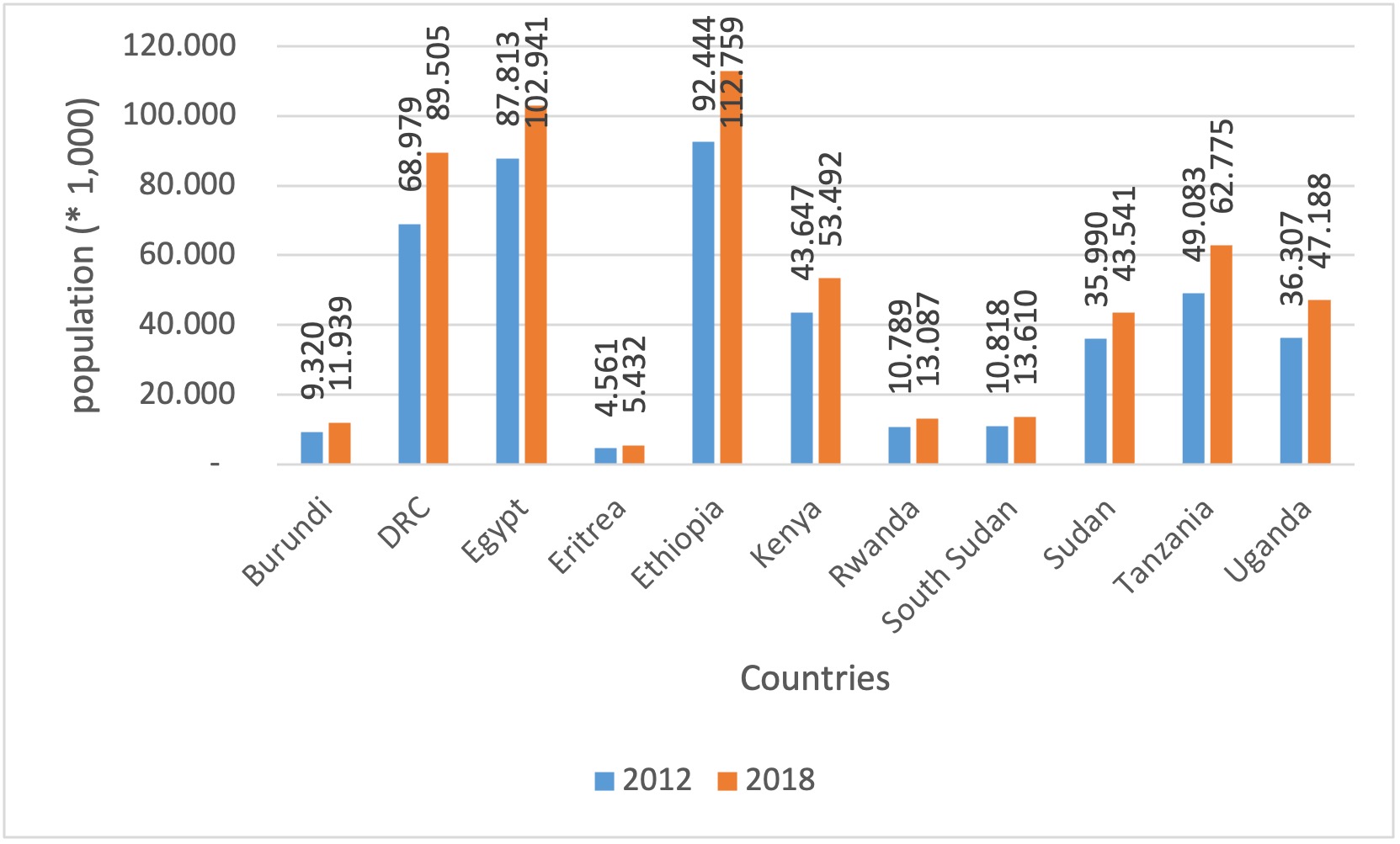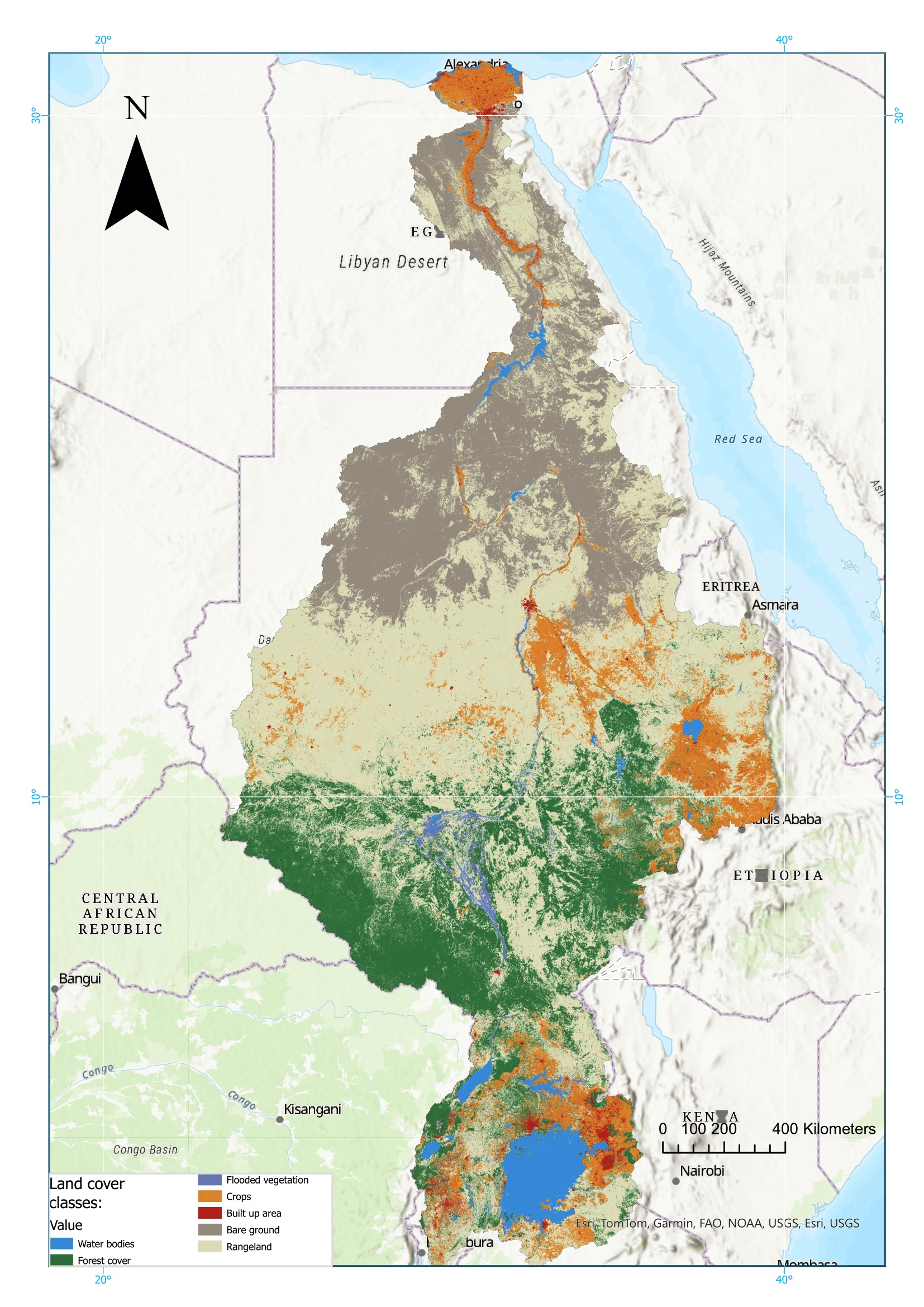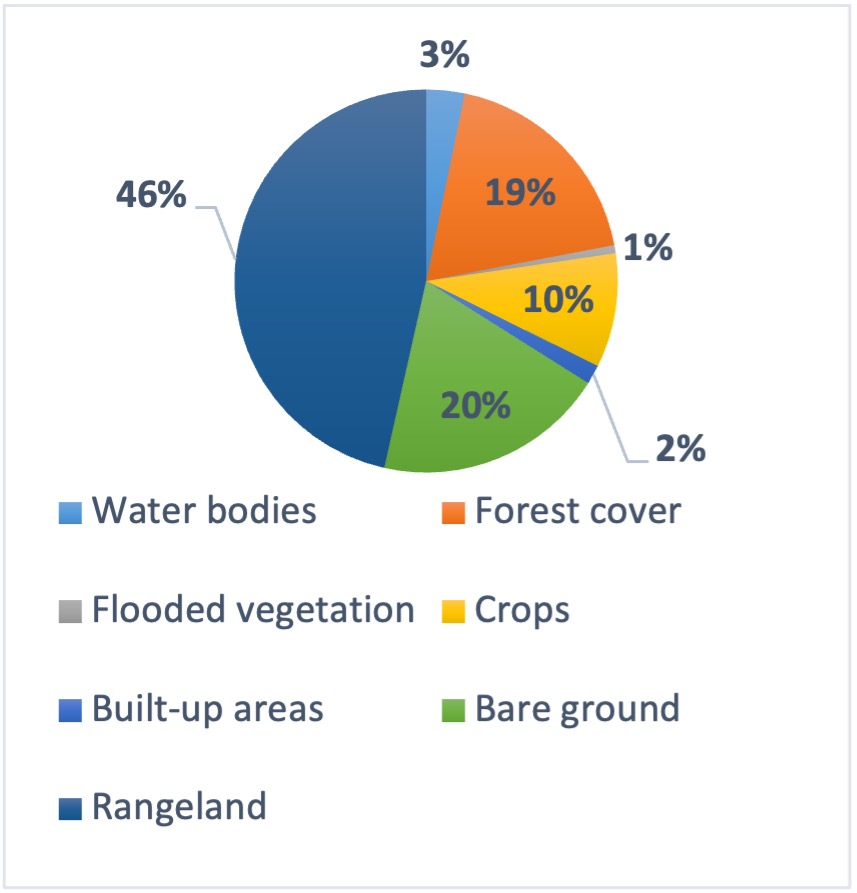NILE BASIN RESEARCH (N-AFRICA)
Socioeconomic Development
Population
The riparian countries of the Nile basin are home to more than 500 million people in 2020, half of them (257 millions) are located in the Nile Basin boundaries territory. This number (500 million) is expected to reach 1 billion in 2050 (Basheer et al., 2024). Currently the large share of population is located in DRC (197 million people), followed by Ethiopia (191 million people), and then Egypt (138 million) (Nile-SEC, 2022).
Five countries out of 11 account for more than 80% of the total population living in the Nile basin boundaries: Egypt, Rwanda, South Sudan, and Uganda (as shown in Figure 1).
Land use land cover
According to Sentinel Land cover Explorer by ESRI from Sentinel-2, the main land use land cover type is rangeland (46%) followed by bareground (20%) and forest cover (19%), while croplands occupies only 10% of the total basin’s area.


Forest cover is generally found in high elevation zones, while the agricultural lands are located in low elevation areas (502 m), and medium elevation zones (890 – 1,454 m).
The Nile basin is home to important natural ecosystems on the international level, such as the Sudd wetland in South Sudan with an area ranging between 57,000 Km2 and 130,000 Km2 (Mohammed et al., 2005). Other important wetlands are also spread in the equatorial lakes region such as Lake Albert. The Nile Delta is also crucial wetland that limits the saline intrusion from the Mediterranean see.
References
Basheer, M., Siddig, K., & & Ringler, C. (2024). Water-energy-food planning and operations framework for river basins with a case study on the Blue Nile. Journal of Hydrology. Retrieved from https://doi.org/10.1016/j.jhydrol.2024.130801
NBI. (2021). State of the River Nile Basin - Water Security in the Nile Basin 2021. Retrieved from https://adelphi.de/system/files/document/State%20of%20Basin%202021.pdf
Nile-SEC. (2022, November). Nile Basin Socio-Economic Outlook 2050 - NBI Technical Reports - WRM-2022-15. Entebbe, Uganda: Nile Basin Initiative (NBI). Retrieved from https://nilebasin.org/sites/default/files/2023-09/Strategic-SocioEconomic-Outlook-final-170323.pdf
Mohamed, Y. A., van den Hurk, B. J., Savenije, M. H., & Bastiaanssen, M. W. (2005). Impact of the Sudd wetland on the Nile hydroclimatology. Water Resources Research, 41(8). Retrieved from https://doi.org/10.1029/2004WR003792

